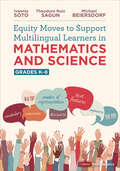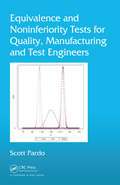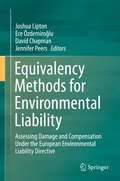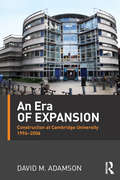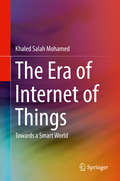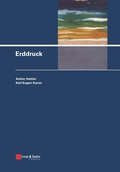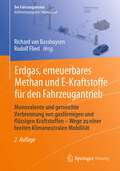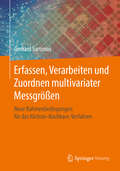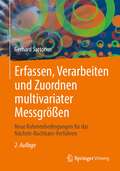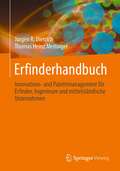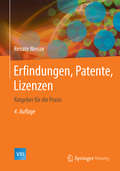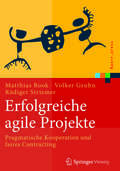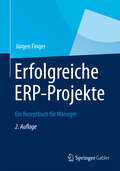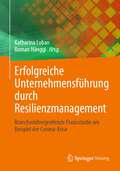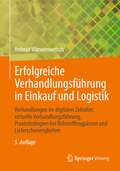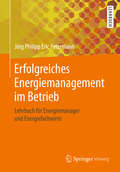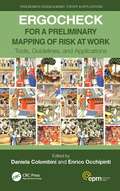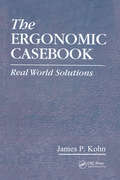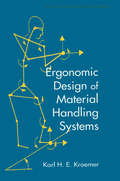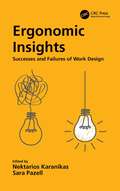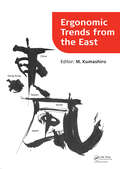- Table View
- List View
Equity Moves to Support Multilingual Learners in Mathematics and Science, Grades K-8 (Corwin Mathematics Series)
by Ivannia Soto Theodore Sagun Michael BeiersdorfA strengths and assets-based approach to multilingual learner success As the number of multilingual learners (MLLs) in US schools continues to grow, educators need to learn the moves necessary to support the success of these students in mathematics and science. Equity Moves to Support Multilingual Learners in Mathematics and Science, Grades K-8 focuses on the literacy opportunities that MLLs can achieve when language scaffolds are taught alongside rigorous math and science content. It provides a framework teachers can use to develop equity-centered, scaffolded math, science, or STEAM lessons. Readers will find Anchor phenomena that demonstrate issues with lesson design and delivery and highlight areas to include language and content scaffolds Examples for honoring the languages of students, families, and communities Culturally responsive techniques and easy-to-use tables featuring the equity moves Vignettes showcasing the equity move in the classroom setting A focus on four language demands: vocabulary, discourse, multiple modes of representation, and text features With an assets-based approach to what MLLs can do, this book helps teachers unpack the language demands of mathematics and science and encourages reflection of their own practices in scaffolding for language and culture.
Equity Moves to Support Multilingual Learners in Mathematics and Science, Grades K-8 (Corwin Mathematics Series)
by Ivannia Soto Theodore Sagun Michael BeiersdorfA strengths and assets-based approach to multilingual learner success As the number of multilingual learners (MLLs) in US schools continues to grow, educators need to learn the moves necessary to support the success of these students in mathematics and science. Equity Moves to Support Multilingual Learners in Mathematics and Science, Grades K-8 focuses on the literacy opportunities that MLLs can achieve when language scaffolds are taught alongside rigorous math and science content. It provides a framework teachers can use to develop equity-centered, scaffolded math, science, or STEAM lessons. Readers will find Anchor phenomena that demonstrate issues with lesson design and delivery and highlight areas to include language and content scaffolds Examples for honoring the languages of students, families, and communities Culturally responsive techniques and easy-to-use tables featuring the equity moves Vignettes showcasing the equity move in the classroom setting A focus on four language demands: vocabulary, discourse, multiple modes of representation, and text features With an assets-based approach to what MLLs can do, this book helps teachers unpack the language demands of mathematics and science and encourages reflection of their own practices in scaffolding for language and culture.
Equivalence and Noninferiority Tests for Quality, Manufacturing and Test Engineers
by Scott PardoIn engineering and quality control, various situations, including process validation and design verification, require equivalence and noninferiority tests. Equivalence and Noninferiority Tests for Quality, Manufacturing and Test Engineers presents methods for using validation and verification test data to demonstrate equivalence and noninferiority
Equivalency Methods for Environmental Liability
by Joshua Lipton Ece Özdemiroğlu David Chapman Jennifer PeersThe book is the only technical volume that explains how equivalency analysis methods mentioned in Annex II of the European Environmental Liability Directive should be implemented. It uses case studies to illustrate real-world application of the methods, which are based on the experience in the USA and in the European Union and have been tested in three years of training programs funded by the European Commission. Academically rigorous and technically comprehensive, the book is intended for technical experts wanting to assess damage and remediation options as well as for decision-makers wishing to commission such assessments and judge their quality. These include competent authorities, operators, financial security providers, academics, consultants and NGOs.
An Era of Expansion: Construction at the University of Cambridge 1996–2006
by David M. AdamsonChanging conditions in Higher Education and national funding regimes preceded a proliferation of construction projects in universities between 1996 and 2006. This book reviews a hundred projects between 1996 and 2006, and uses 9 detailed case studies from the author's time in charge of capital projects at the University of Cambridge to show us how these projects were conceived, argued for, designed, procured, managed, constructed, and passed on to building users. Readers with an interest in project management, estate management, University management, or the history of the University of Cambridge will find this fascinating and wide-ranging book to be uniquely valuable.
The Era of Internet of Things: Towards a Smart World
by Khaled Salah MohamedThis book introduces readers to all the necessary components and knowledge to start being a vital part of the IoT revolution. The author discusses how to create smart-IoT solutions to help solve a variety of real problems. Coverage includes the most important aspects of IoT architecture, the various applications of IoT, and the enabling technologies for IoT. This book presents key IoT concepts and abstractions, while showcasing real case studies. The discussion also includes an analysis of IoT strengths, weaknesses, opportunities and threats. Readers will benefit from the in-depth introduction to internet of things concepts, along with discussion of IoT algorithms and architectures tradeoffs. Case studies include smart homes, smart agriculture, and smart automotive.
Erase the Waste and Turn Trash Into Cash: Inquiry-Based Science Lessons for Advanced and Gifted Students in Grades 3-4
by Jason S. McIntoshRecipient of the 2021 NAGC Curriculum Award Americans throw away 254 million tons of trash every year, and students are naturally curious about where it all goes. Erase the Waste and Turn Trash Into Cash, a 30-lesson interdisciplinary science unit: Is designed to teach high-ability third and fourth graders how to think like real-world environmental engineers. Requires students to reduce, reuse, recycle, and reimagine trash in new and innovative ways. Was designed using the research-based Integrated Curriculum Model. Features challenging problem-based learning tasks and engaging resources. Includes detailed teacher instructions and suggestions for differentiation. In this unit, students study the concept of innovation and learn to manage and dispose of waste in creative and environmentally friendly ways, all while building an understanding of sustainability, recycling, environmental science, and the green economy. Suggestions and guidance are included on how teachers can adjust the rigor of learning tasks based on students' interests and needs. Grades 3-4
Erased (Altered #2)
by Jennifer RushThey thought they had escaped. They were wrong.After fleeing the Branch with Sam, Cas, and Nick, Anna is learning how to survive in hiding, following Sam's rules: Don't draw attention to yourself. Always carry a weapon. Know your surroundings. Watch your back.When memories from Anna's old life begin to resurface--and a figure from her childhood reappears--Anna's loyalties are tested. Is it a Branch set-up, or could it be the reunion Anna has hoped for? Ultimately, the answers hinge on one question: What was the real reason her memories were erased in the first place?Jennifer Rush delivers a thrilling sequel to Altered in a novel packed with mysteries, lies, and surprises that are sure to keep readers guessing until the last page is turned.
Erddruck
by Achim Hettler Karl-Eugen KurrerDas Thema Erddruck gehört zu den ältesten und umfangreichsten Kapiteln der Bodenmechanik und des Grundbaus und ist eine der Säulen des konstruktiven Ingenieurbaus. Eingangs wird die Entwicklung der Erddrucktheorie ausführlich beschrieben. Die Darstellungen reichen von den ersten Ansätzen der Erddruckbestimmung über kontinuumsmechanische Erddruckmodelle bis zur Integration der Erddruckforschung in das disziplinäre Gefüge der Geotechnik. Der Hauptteil des Buches umfasst eine Auswahl aktueller Berechnungsgrundlagen. Ziel ist es, den Grundbauingenieuren und den Tragwerksplanern in Baufirmen, Ingenieurbüros sowie in der Bauverwaltung aber auch Studenten eine Sammlung von Arbeitsanleitungen zur Verfügung zu stellen. Um das theoretische Verständnis zu wecken, werden zunächst die wesentlichen Grundlagen zur Ermittlung des Erddrucks vorgestellt. Anschließend werden die für die Praxis wichtigsten Verfahren zum aktiven und passiven Erddruck sowie zum Erdruhedruck behandelt. Dabei werden auch räumliche Wirkungen berücksichtigt. Ein Anliegen ist es, in knapper Form auch Hinweise zu nicht alltäglichen Fragestellungen zu geben und auf weiterführende Literatur zu verweisen. In den letzten Jahren ist immer mehr die Verschiebungsabhängigkeit des Erddrucks in den Blickpunkt getreten. Dies betrifft nicht nur den passiven, sondern auch den aktiven Fall. An den DIN-Ausschuss "Berechnungsverfahren" wurden immer wieder Fragen herangetragen. Eine Auswahl davon wird im Kommentar zu DIN 4085 behandelt, der auch Hinweise zu den Beispielen im Beiblatt zu DIN 4085 gibt, das im September 2018 erschienen ist. Zur Geschichte der Erddrucktheorie gehören 40 ausgewählte Kurzbiographien von Wissenschaftlern und Ingenieuren in der Praxis, die das Thema über die Jahrhunderte immer wieder aufgegriffen und weiterentwickelt haben. Ergänzt wird das Buch durch zwei Anhänge mit Begriffen, Formelzeichen und Indizes sowie Erddrucktabellen.
Erdgas, erneuerbares Methan und E-Kraftstoffe für den Fahrzeugantrieb: Monovalente und gemischte Verbrennung von gasförmigen und flüssigen Kraftstoffen – Wege zu einer breiten klimaneutralen Mobilität (Der Fahrzeugantrieb)
by Richard Van Basshuysen Rudolf FlierlDas Buch bietet einen detaillierten Überblick über die verschiedenen Aspekte von Eigenschaften, Gewinnung, Speicherung und Anwendung von Erdgas, erneuerbarem Methan und synthetischen E-Kraftstoffen. Der aktuelle Forschungsstand zu elektrisch erzeugten Kraftstoffen (E-Kraftstoffe/Fuels) wird durch einen FVV-Bericht aufgezeigt. In dieser neuen Auflage wird nicht nur die monovalente Verbrennung dieser Kraftstoffe in Fahrzeugen betrachtet, sondern auch die Vorteile einer gleichzeitigen Verbrennung von gasförmigen und flüssigen Kraftstoffen vermittelt. Neben den fundierten Darstellungen zu Technik und Betrieb wird die aktuelle CO2-Diskussion und die zukünftigen Entwicklungen zu einer klimaneutralen Mobilität erörtert.
Erfassen, Verarbeiten und Zuordnen multivariater Messgrößen: Neue Rahmenbedingungen für das Nächste-Nachbarn-Verfahren
by Gerhard SartoriusDas Buch gibt einen Überblick zu verschiedenen Verarbeitungsmethoden zur Klassifizierung von Messgrößen und den dazu benötigten Techniken. Mit verschiedenen Beispielen wird allgemein verständlich die Arbeitsweise der vorgestellten Module erläutert. Dabei werden methodenbedingte Spielräume hervorgehoben und der Bezug zu Anwendungen hergestellt, um dem Leser zu ermöglichen, die für eine Anwendung optimale Lösung zu finden. Die Bereitstellung neuer Rahmenbedingungen ermöglicht es, multivariate Messgrößen hochpräzise und ohne Eingabe von Parametern durchzuführen. Die Berechnungen werden mit den Programmpaketen MatLab und Excel durchgeführt. Dabei wird besonderer Wert auf die Nachvollziehbarkeit der zentralen Rechenoperationen gelegt.
Erfassen, Verarbeiten und Zuordnen multivariater Messgrößen: Neue Rahmenbedingungen für das Nächste-Nachbarn-Verfahren
by Gerhard SartoriusDas Buch gibt einen Überblick zu verschiedenen Verarbeitungsmethoden zur Klassifizierung von Messgrößen und den dazu benötigten Techniken. Mit verschiedenen Beispielen wird allgemein verständlich die Arbeitsweise der vorgestellten Module erläutert. Dabei werden methodenbedingte Spielräume hervorgehoben und der Bezug zu Anwendungen hergestellt, um dem Leser zu ermöglichen, die für eine Anwendung optimale Lösung zu finden. Die Bereitstellung neuer Rahmenbedingungen ermöglicht es, multivariate Messgrößen hochpräzise und ohne Eingabe von Parametern durchzuführen. Die Berechnungen werden mit den Programmpaketen MatLab und Excel durchgeführt. Dabei wird besonderer Wert auf die Nachvollziehbarkeit der zentralen Rechenoperationen gelegt.
Erfinderhandbuch: Innovations- und Patentmanagement für Erfinder, Ingenieure und mittelständische Unternehmen
by Jürgen R. Dietrich Thomas Heinz MeitingerDieses Fachbuch möchte es dem Leser ermöglichen, das Innovationsmanagement und den gewerblichen Rechtsschutz für sein Unternehmen vorteilhaft anzuwenden. Aus der Praxis der Autoren als Hochschuldozenten, Leiter Patentwesen und Patentanwalt wissen sie, dass dies keine Selbstverständlichkeit ist. Dabei liegt es nicht immer an der Qualität der Erfindung. Offensichtlich ist mehr erforderlich als eine gute Idee, damit ein Unternehmen wertvolle Patente erhalten kann. Patente sind ein gebräuchliches und bewährtes Instrument zum Schutz von Erfindungen und Innovationen, und haben damit einen entscheidenden Einfluss auf den Erfolg eines Unternehmens. Der qualifizierte Umgang mit dem Innovationsmanagementprozess und den gewerblichen Schutzrechten ist daher eine Kernaufgabe des innovativen, technologieorientierten Unternehmens. Dabei hat das Innovations- und Patentmanagement zahlreiche interdisziplinäre Aufgaben im rechtlichen, wirtschaftlichen und technischen Umfeld zu bündeln und zu koordinieren. Dieses neue Fachbuch soll als kompakter Leitfaden dem Erfinder, Ingenieur und dem KMU in übersichtlicher Form dazu Hilfestellung geben.
Erfindungen, Patente, Lizenzen: Ratgeber für die Praxis (VDI-Buch)
by Renate WeisseDieser Ratgeber behandelt die häufigsten Fragen in der patentanwaltlichen Erstberatung. Woran erkenne ich eine Erfindung? Wie kann ich meine Ideen schützen? Welche Rechte und Pflichten hat ein Arbeitgeber und ein Arbeitnehmererfinder? Was muss ich tun um internationalen Schutz für meine Innovationen zu erhalten? Wie recherchiere ich nach Schutzrechten und wie vermeide ich eine Schutzrechtsverletzung? Neben den Fragen des Patent- und Gebrauchsmusterrechts werden auch die Möglichkeiten des Marken- und Designschutzes dargestellt. Der Ratgeber gibt viele praxisrelevante Tipps und hilft bei kostenintensiven Entscheidungen.
Erfolgreiche agile Projekte: Pragmatische Kooperation und faires Contracting (Xpert.press)
by Matthias Book Volker Gruhn Rüdiger StriemerDas Buch beschreibt pragmatische Instrumente und Methoden, die Software-Entwicklern und Fachexperten dabei helfen, ein gemeinsames Problem- und L#65533;sungsverst#65533;ndnis zu entwickeln und Projekte so zu managen, dass Risiken fair zwischen Auftraggeber und Auftragnehmer verteilt werden. Teil 1 beleuchtet kurz die agile Entwicklungspraxis im kommerziellen Umfeld. Teil 2 beschreibt den Interaction Room, in dem Entwickler und Fachexperten auf gleicher Augenh#65533;he zusammenarbeiten. Teil 3 beschreibt das Preis- und Vertragsmodell adVANTAGE, das die Br#65533;cke zwischen agiler Philosophie und vertraglich fixierten Leistungserwartungen schl#65533;gt. Teil 4 illustriert die Methoden am Beispiel einer industriellen Fallstudie, bevor Teil 5 ein modernes Qualifikationsprofil aufstellt. Das Buch wendet sich an CIOs, Projektmanager und Entwickler, die Risiken in ihren Projekten fr#65533;her erkennen, souver#65533;ner mit der Ungewissheit komplexer Projekte umgehen und effektiver mit Kunden bzw. Dienstleistern kooperieren wollen.
Erfolgreiche ERP-Projekte
by Jürgen FingerDie Implementierung von komplexen ERP-Systemen (Enterprise Resource Planning) ist eine Herausforderung für Management und Projektverantwortliche. Dieses "Rezeptbuch" unterstützt nicht nur bei der Auswahl eines geeigneten Standardsystems, sondern schärft auch das Bewusstsein für eine zielstrebige Projektplanung und -abwicklung sowie für eine Intensivierung der Managementfunktion "Organisieren" (Geschäftsprozessoptimierung). Die Einführung von ERP-Systemen, die das gesamte Unternehmen betrifft, verursacht die weitreichendsten Veränderungen für die Mitarbeiter. Aus diesem Grunde wird in diesem Buch die Erkenntnis, dass der Mensch der "Erfolgsfaktor Nummer 1" in ERP-Projekten ist, in zweierlei Weise konsequent besonders zum Ausdruck gebracht: erstens: die Projektverantwortlichen agieren im Sinne einer "wertschätzenden Kommunikation (WSK)" und zweitens: in allen Phasen des Projekts werden die Mitarbeiter ,aktiv' in das Geschehen mit einbezogen, um die Akzeptanz für das "Neue" sukzessive aufzubauen. Auf diese beiden Faktoren wird quer durch die Ausführungen immer wieder hingewiesen.
Erfolgreiche Unternehmensführung durch Resilienzmanagement: Branchenübergreifende Praxisstudie am Beispiel der Corona-Krise
by Katharina Luban Roman HänggiUnternehmen und Organisationen, die gestärkt aus einer Krise hervorgehen und Krisen generell gut meistern, werden als resilient bezeichnet. Doch was muss man tun, um unerwartete und existenzbedrohende Herausforderungen zu bewältigen und diese sogar zu einer positiven Veränderung zu nutzen? Das vorliegende Buch liefert im unternehmerischen Kontext konkrete Antworten auf diese Frage.Dazu werden zunächst bestehende theoretische Ansätze zum Resilienzbegriff und dem Resilienzmanagement diskutiert und zusammengeführt. Auf dieser Basis werden 14 Branchen und ihre Situation vor und während der Corona-Krise analysiert und anhand von 36 Fallstudien untersucht. Dabei zeigt sich, was in diesen Branchen geholfen oder gefehlt hat, um die aktuelle Corona-Krise erfolgreich zu bewältigen. Es entsteht ein überraschend klares Bild über Ansätze und Faktoren, die in allen Branchen bei künftigen Schock-Ereignissen hilfreich sein werden.Zusammenfassend wird aus diesen Erkenntnissen das Rapperswiler Resilienzmodell entwickelt, ein Vorgehenskonzept zur Stärkung der Resilienz in Organisationen und Unternehmen mit konkreten Handlungsempfehlungen für die strategische und operative Unternehmensführung.
Erfolgreiche Verhandlungsführung in Einkauf und Logistik: Verhandlungen im digitalen Zeitalter, virtuelle Verhandlungsführung Praxisstrategien bei Rohstoffengpässen und Lieferschwierigkeiten
by Helmut WannenwetschDas erfolgreiche Fachbuch behandelt alle wichtigen Fragen für die internationale Verhandlungsführung im Einkauf und in der Logistik. Praktiker finden modernen Strategien und Werkzeuge, die sie für Einkaufs- und Preisverhandlungen benötigen. Viele Grafiken, Tabellen, Praxis- und Rechenbeispiele unterstützen den Leser beim professionellen Einkaufs- und Verhandlungsmanagement. Neue Beiträge und aktualisierte Informationen zeichnen diese Neuauflage aus.Besondere Highlights:• Virtuelle Verhandlungen mit inländischen und ausländischen Lieferanten• Frühwarnindikatoren erkennen und umsetzen• Erfolgreiche Verhandlungen trotz Materialknappheit und Lieferengpässen • Schwierige Verhandlungssituationen: Praxisbeispiele von Profis mit Lösungen• Verhandlungsführung in China und Indien (neuer Beitrag)• Einkaufspreisberechnungen mit Bonus, Skonto, Rabatt und Listungsgebühren• Bestechung, aktueller Korruptionsindex und neue Incoterms• Framingstrategien als neues Werkzeug• Neues Vertragsmanagement
Erfolgreiches Energiemanagement im Betrieb: Lehrbuch für Energiemanager und Energiefachwirte
by Jörg Philipp PetermannGrundlagenwerk für Auszubildende und Studenten des Energiemanagements, der Energiewirtschaftslehre sowie entsprechender Kurse und Lehrgänge mit praktischem Bezug. Dabei wird kein theoretisches Wissen vorausgesetzt, sondern viel Wert auf Erklärungen, Nachvollziehbarkeit und Praxis gelegt. Ausgehend von den Basiseinheiten wird das Phänomen und die vielfältige Erscheinung der Energie erklärt, dann Energieumwandlung und Wirkungsgrad, Querschnittstechnologien, Lastmanagement und Nutzerverhalten. Schließlich bietet dieses Buch Exkurse zu Energiemanagementsystemen und Amortisationsrechnung sowie Fragen und Aufgaben zur Vertiefung und Übung.
ERGOCHECK for a Preliminary Mapping of Risk at Work: Tools, Guidelines, and Applications (Ergonomics Design & Mgmt. Theory & Applications)
by Daniela Colombini Enrico OcchipintiOne of the latest developments being pursued by the World Health Organization (WHO) and other international organizations (ILO, ISO), in relation to preventing work-related diseases and disorders, concerns the creation of "toolkits" and, within them, of simple tools. This book suggests a methodology and a comprehensive simple tool (ERGOCHECK, downloadable for free from the website www.epmresearch.org) for bringing together various potential risk factors to undertake a preliminary mapping of discomfort/danger in the workplaces and to assess consequent priorities for prevention, especially (but not only) in small and very small businesses. The tool is primarily designed to be used by employers, OSH (Occupational Health and Safety) operators and trade union representatives, but it may also be useful for occupational medical staff conducting periodical inspections and drafting health surveillance protocols, and for supervisory bodies (labor inspectors) conducting inspections in the workplace needing to rapidly detect potentially dangerous situations requiring specific preventive interventions. Daniela Colombini is a certified European ergonomist and a senior researcher at the Research Unit Ergonomics of Posture and Movement, Milan, where she developed methods for the analysis, evaluation and management of risk and damage from occupational biomechanical overload. She was a professor at the School of Specialization in Occupational Medicine in University of Milan and University of Florence. She is the coauthor of the OCRA method (EN 1005-5 standard and ISO 11228-3). She is the founder and president of the EPM International Ergonomics School (EPMIES). She has been working with accredited native teachers in countries such as the USA, France, India, Spain, Chile, Colombia, Guatemala, Costa Rica, Brazil and other South American countries. She is a member of the Ergonomics Committee of UNI working in the international commissions of European Committee for Normalization (CEN) and International Organization for Standardization (ISO). Enrico Occhipinti is a certified European ergonomist. He is a professor at the School of Specialization in Occupational Medicine in University of Milano, and the director of the Research Unit Ergonomics of Posture and Movement (EPM) at Fondazione Don Gnocchi ONLUS-Milano. He developed and coauthored the OCRA method. He is a member and has been a coordinator (up to 2012) of the Technical Committee on Prevention of Musculoskeletal Disorders of the International Ergonomics Association (IEA), and represents Italy in international commissions of the CEN and the ISO dealing with ergonomics and biomechanics.
Ergodesign Methodology for Product Design: A Human-Centered Approach
by Marcelo M. SoaresThis book presents a co-design detailed methodology that will enable the reader to develop human-centered product designs, considering the user’s needs, skills, and limitations. The purpose of this book is to produce an ergonomic design methodology in which the "user’s voice" can be translated into product requirements in a way that designers and manufacturers can use, characterizing it as a co-design methodology. It discusses important topics including ergonomics and product design, design specifications, project evaluation, modeling and prototyping, product safety, human error, kansei/affective engineering, usability and user experience, models of usability, methods for research and evaluation of usability, methods for evaluation of user-experience, preliminary strategic design planning, detailing design, and design, ergonomic and pandemics. The book offers a human-centered design methodology that allows the reader to carry out analysis and design projects for both products aimed at the disabled user population and those that serve the general population. It will be a valuable reference text for undergraduate and graduate students and professionals in the fields of ergonomics, design, architecture, engineering, and related fields. It can also be used by students and professionals of physiotherapy and occupational therapy interested in designing products for people with special needs.
The Ergonomic Casebook: Real World Solutions
by James P. KohnOne of the greatest challenges in the occupational health and safety profession is the application of theory to actual workplace practice. The difference between how the workplace should be ideally designed and the limitations that occur in pre-existing facilities are often difficult to overcome. With examples from the service industry, heavy industry, agriculture, and the office, this text bridges these gaps between theory and practice by using case studies to illustrate sound ergonomic practices.The Ergonomic Casebook is a resource that professionals and students can use as a guide for solutions to real-world ergonomic problems. Working examples from ergonomic programs in a variety of industries are included. Case studies describe methods for identifying ergonomic problems, and specific causes are reported. Recommended strategies for the elimination of identified stressors are indicated. Implemented strategies and evaluated results are discussed and explained. Applications of this book are endless. Whether you are a health and safety professional with limited expertise in ergonomics or a student taking a health and safety course, you will gain extensive insight into ergonomic problem solving as a result of the case studies presented in The Ergonomic Casebook.
Ergonomic Design for Material Handling Systems
by Karl H.E. KroemerThe ergonomics focus is on how to design work tasks, tools, and environments to fit the capabilities and limitations of people. Ergonomic Design for Material Handling Systems describes how ergonomics can be applied specifically to load handling, both in the original design of systems and in their modification to make jobs easier and safer. Proven techniques (such as flow charting, or job analysis) are combined with new considerations (such as biomechanics and repetitive trauma) to optimize facility, work station, equipment, and job procedures.Ergonomic Design for Material Handling Systems shows how ergonomics overlaps and intertwines with traditional engineering and management, uniting them to produce ease and efficiency in material handling. This book demonstrates how to lay out facilities in order to achieve the most efficient and safe design. It tells how to organize tasks, machinery, people, and materials to improve work flow and "humanize" your workplaces. Consideration of human needs and abilities contributes essentially to successful performance-let this practical book be your guide.
Ergonomic Insights: Successes and Failures of Work Design (Workplace Insights)
by Sara PazellThis book provides a great collection of work design testimonies with transferable lessons across many industry sectors and domains. It discusses physiological and cognitive parameters, teamwork, social aspects, organizational, and broader factors that influence work design initiatives. It is important to learn from practitioner stories and real-world conditions that affect the theoretical applications of work design. Readers will benefit from understanding the struggles and successes of the authors. The chapters cover a wide spectrum of human factors and user needs, including decision making in (ab)normal and safety-critical situations, physical ergonomics, design-in-use modifications, and tailored training. The text examines holistic approaches that lead to improved work methods, worker engagement, and effective system-wide interventions. Ergonomic Insights: Successes and Failures of Work Design is primarily written for professionals and graduate students in the fields of ergonomics, human factors, and occupational health and safety. Educators will also benefit from using these case studies in class lessons.
Ergonomic Trends from the East: Proceedings of Ergonomic Trends from the East, Japan, 12-14 November 2008
by M. KumashiroThe term "Human Engineering" was first used in America at the beginning of the twentieth century and was renamed "Human Factors" after World War II. It continous to develop to this day. After it spread to Europe, interest in the subject increased further and was renamed "Ergonomics" in England. Ergonomics is now starting to flourish in East Asia. T
